
Collector
Service Providers
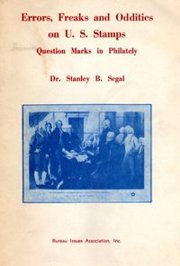
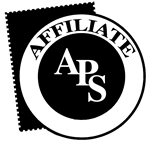 |
| APS Affiliate #103 |
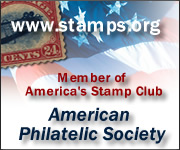 |
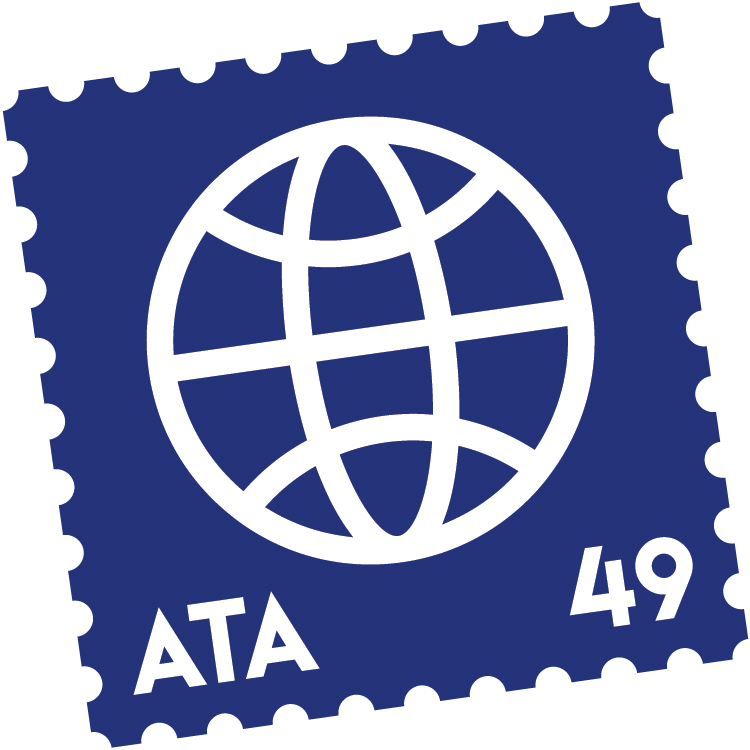 |
| ATA Chapter #94 |
Test Your EFO Knowledge: 2021 Issues
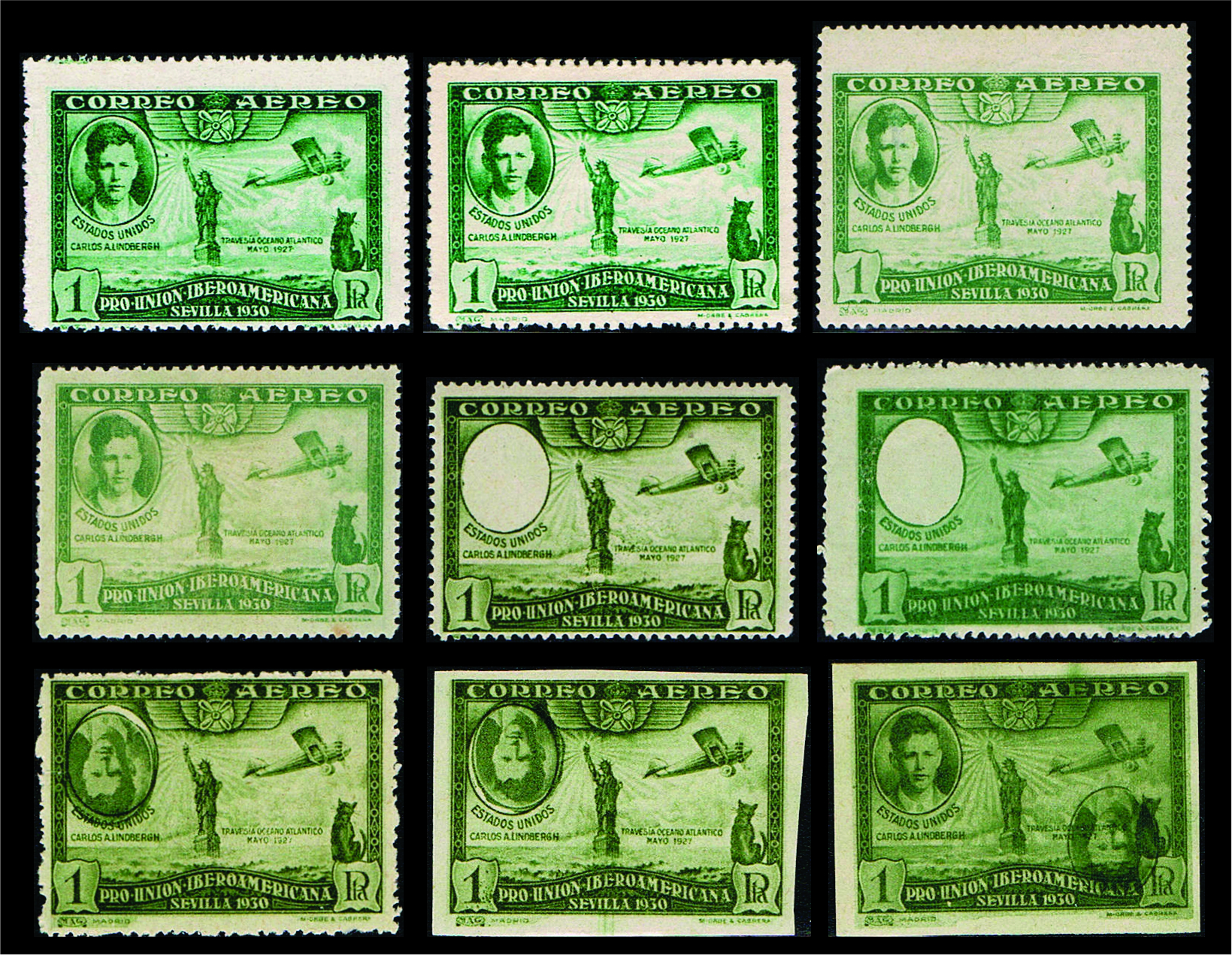
These stamps depict Spain's Scott C56 and varieties thereof. It's complicated...
A note in the Scott Catalogue says: This set was privately produced.
Their promoters presented a certain quantity of these labels to the Spanish Postal Authorities who placed them on sale,
and allowed them to be used on mail for three days, retaining the money obtained from the sale.
They qualify as postage stamps, because they were accepted by Spanish postal authorities as valid postage when used on mail.
It is not the only Spamish stamp set produced using this approach.
Varro Tyler, in an article in the May-June 1993 issue of Topical Time wrote:
As was the case with a number of other flamboyant issues of the period, this one was privately printed in Madrid
and financed privately by another printer and a stamp dealer in that city.
The stamps were supplied free of charge to the government, which placed them on sale for three days only and retained the proceeds.
The producers retained the balance of the original printing order of 250,000 copies of each value and were
permitted to sell them to collectors, as well as to reprint them indefinitely.
Because the plates were privately owned, the producers could (and did) print any kind of errors
they wished. While one is always loathe to say that a philatelic item does not exist, all of the printings
I have seen from the dual plates are not genuine stamps but reprints...
There you go: Errors made to order. Nevertheless, they are not necessarily easy to come by and they certainly have their aficionados.
The story featuring these stamps appeared in the January-March 2013 issue
of The EFO Collector.
December 6th, 2021

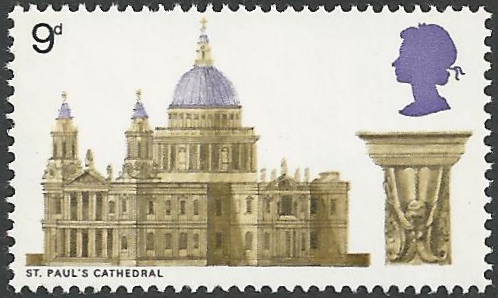
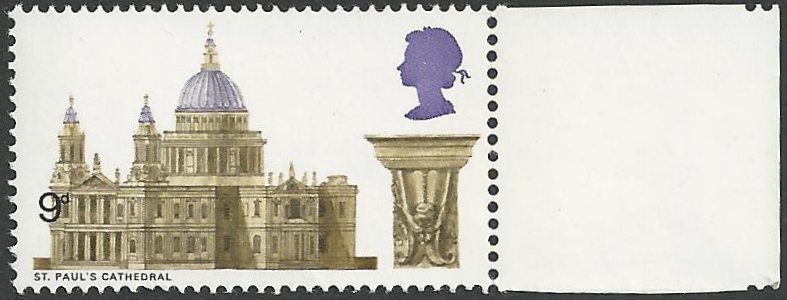
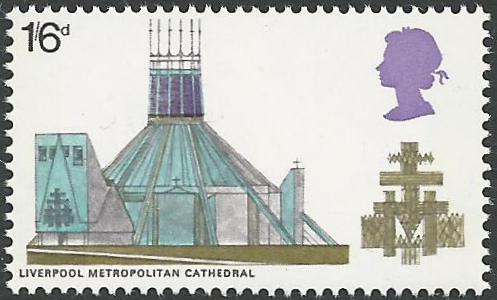
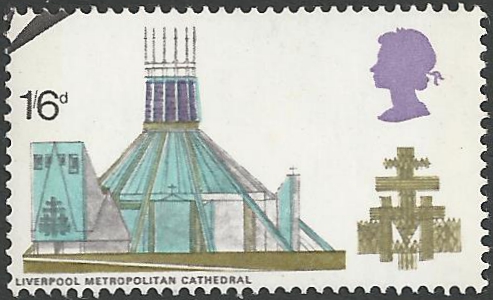
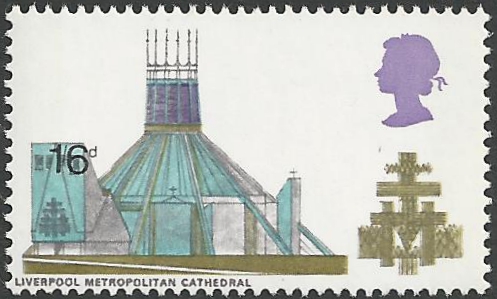
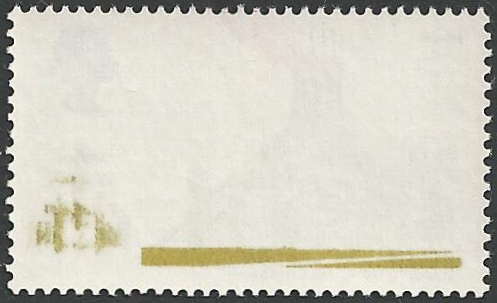
These stamps from Great Britain were part of their 1969 Cathedrals issue.
Top row:
Left stamp is a normal example.
Right stamp has its denomination (black ink) hiding behind the Cathedral.
Middle row:
Left stamp is a normal example.
Center stamp has the black ink (denomination as well as arrow in margin marking the centerline of the pane) shifted down.
Right stamp has a greater black ink shift.
Bottom row:
Figure depicts the reverse of a stamp with brown offset.
The story featuring these stamps appeared in the October-December 2013 issue
of The EFO Collector.
August 27th, 2021

Other Years' Issues:
This year's issues
2024 issues
2023 issues
2022 issues
2020 issues
2019 issues
2018 issues

from Linn's